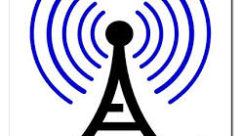UNDERSTANDING IMPEDANCE in equipment interfaces
Jul 1, 1998 12:00 PM,
Bill Whitlock
Impedance is a measure of the apparent resistance to AC current flow in acircuit, and is usually represented by the letter “Z,” measured in ohms.When voltages or currents do not vary with time, as is the case with DC,capacitances and inductances in a circuit have no effect. When voltages orcurrents do vary with time, as with AC, circuit capacitors and inductorsexhibit a frequency-dependent apparent resistance called reactance. Thecombined effect of circuit reactance and resistance that controls ACcurrent flow is called impedance. In AC circuits, “Z” can be used in placeof “R” in Ohm’s Law equations. Because the impedance of any circuitcontaining capacitance and/or inductance will vary with the frequency,impedance is usually specified at some specific frequency. When thecapacitance or inductance in a circuit is insignificant, impedance equalsresistance for all practical purposes. For example, if the input impedanceof an audio tape recorder is stated as 25 kV, it is assumed thatcapacitances or inductances are insignificant and that the impedance willbe constant across the 20 Hz to 20 kHz frequency range. A loudspeaker is agood example of a device with significant inductance and capacitance inaddition to resistance. Because of this, a loudspeaker’s impedance varieswidely with frequency-an 8 V speaker may be that impedance at only one ortwo specific frequencies. The concept to remember is that when describingAC circuits, impedance is the functional equivalent of resistance. Mostwell-designed equipment outputs and inputs have impedances that areessentially constant across the signal’s frequency range, and I havesimplified the diagrams and discussion by assuming they are resistive.
Interface basicsThere are two basic types of interface-unbalanced and balanced-that aredefined by the impedances of their input or output terminals as measured toground. Both use a pair of wires to carry the signal. In the unbalancedinterface one wire is grounded (impedance to ground = zero), and the othersignal-carrying wire has a higher impedance. In the balanced interface,both wires have equal (and non-zero) impedances to ground.
Every output has an impedance, measured in ohms, known as output impedance.If the output impedance were zero, we could place any load on the output,and the voltage at the output terminals would not change. For practicalreasons, real outputs cannot have zero impedance. Likewise, every input hasan impedance called its input impedance. When an output is connected to aninput, a source (the output) is connected to a load (the input), and aseries circuit, called a voltage divider, is created where voltage dropsare proportional to impedances. This arrangement is shown in Figures 1 and2, where Zo is output impedance (split between two resistors for thebalanced output), and Zi is input impedance. (The triangles represent idealamps that have zero output impedance and infinite input impedance, havingno effect on Zo or Zi.) Because the main purpose of the interface is totransfer maximum signal voltage from output to input, it is desirable thatZi be much higher than Zo. In typical equipment, Zo ranges from 50 V to 1kV and Zi ranges from 10 kV to 100 kV, transferring 90% to 99.9% of theavailable signal voltage across the interface.
Other considerationsIf you ask a manufacturer what the output impedance of his equipment is,you may get a totally wrong answer. It is often missing from spec sheets,with something like “20 kV minimum load impedance” as the onlycharacterization of the output. Actual output impedance is very importantto know. For example, if an output must drive a long cable, its impedancecan seriously affect the treble response of a sound system. Shielded audiocable has capacitance, typically about 50 pF per foot (15 pF/m). Thiscapacitance and the output impedance form a low-pass filter, therebyattenuating high frequencies. If the output impedance is 1 kV (not uncommonin consumer equipment), response at 20 kHz will be 0.5 dB for 50 feet (15m), 1.5 dB for 100 feet (30.5 m) and 4 dB for 200 feet (61 m) of cable. Ifthe output impedance were 100 V instead of 1 kV, the effects would beinsignificant. Low output impedance is a very important consideration whencableruns are long.
There is a common misconception about impedance-matching in audio systems.A little work with Ohm’s Law will prove that maximum power is transferredfrom source to load when the load impedance is the same as (or matched to)the source impedance. Impedance-matching was used in early telephonesystems and early vacuum-tube electronics when EQs and filters were passiveLC (inductor-capacitor) designs. Passive filters will have their specifiedfrequency response only when the driving source and receiving load are thespecified impedance. In this old equipment, both were most commonly 600 V.This is one reason the 600 V myth lives on in the modern world. Theimpedance- matching myth most commonly means a 600 V source is required todrive (or match) a 600 V load. If this is done, only half the availablesignal voltage will transfer to the input, and the output driver mayperform badly because it must drive an unnecessarily heavy load.Impedance-matching confusion has also been created by certain marketers ofdesigner audio cables who imply that audio cables behave as transmissionlines. Unless an audio cable is more than about 5,000 feet (1,524 m) long,it is not a transmission line in the engineering sense and does not requirelow-impedance termination.
In professional audio, the goal of the signal transmission system is todeliver maximum voltage, not maximum power. To do this, devices need lowoutput impedances and high input impedances. This practice is the subjectof a 1987 I.E.C. international standard requiring output impedances to be50 V or less and input impedances to be 10 kV or more. Sometimes calledvoltage-matching, this method minimizes the effects of cable capacitanceand also allows an output to drive multiple inputs simultaneously. Becauseseveral of these high-impedance inputs (loads) can connect across (bridge)the low-impedance output with negligible loading (level drop), these inputsare referred to as bridging inputs.
Because video and RF frequencies have much shorter wavelengths than audio,video and RF cables are true transmission lines that must be properlyterminated with their characteristic impedance at each physical end.Unterminated or mis-terminated cables can cause reflection ofhigh-frequency energy from one end of the cable to the other, leading tothe generation of visible ghosts or rings in video images or transmissionerrors in data cables. Virtually all video outputs and most video inputshave a 75 V impedance, which automatically terminates a 75 V cable. Somevideo inputs have a switch marked “hi-Z,” which raises impedance to severalthousand ohms, allowing the input to bridge the line without terminating itor affecting the signal level. This is used, for example, to monitor videosent from a camera to a recorder. In this case the camera terminates oneend of the cable, the recorder terminates the other end, and the monitorbridges the cable between them. I hope this column has helped end someconfusion.









